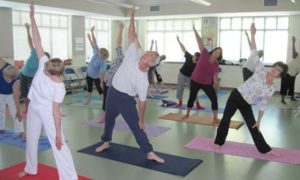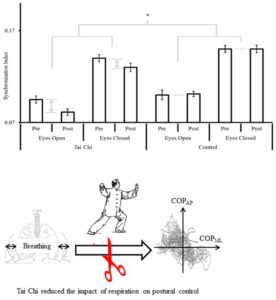
Violence and Peace
By John M. de Castro, Ph.D.
“Root out the violence in your life, and learn to live compassionately and mindfully. Seek peace. When you have peace within, real peace with others is possible.” ― Thich Nhat Hanh
Over the last few years, senseless violence has become more and more prevalent in our society and in our world. Over the last year, in particular, despicable violent acts seem to be occurring at a higher and higher frequency, to the point where they seem to be happening constantly. Besides the horror and disgust produced, these acts produce fear and anger, leading to a desperate need to do something about it. The most frequent solution is to answer violence with repression or with more violence. As the gun rights lobby has said, “the only way to stop a bad guy with a gun is with a good guy with a gun.”
As Mahatma Gandhi has recognized “Victory attained by violence is tantamount to a defeat, for it is momentary.” It attempts to rectify the problem quickly, but the roots of the problem are deep and it does not address the roots. It only deals with the surface manifestations. As Mahatma Gandhi stated “I object to violence because when it appears to do good, the good is only temporary; the evil it does is permanent.” So, violence produces a momentary solution but in the long-run actually deepens the problem. This is on display in the Middle East where violence has begot violence for centuries. Rather than solving the root problems, it has instead led to more and more hatred, violence, and deeper and deeper problems.
On the other hand, when violence is met with non-violence, with forgiveness and understanding, the good it does is very long-lasting. There was genocidal violence in the African country of Rwanda, leading to the violent death of nearly a million people. In the aftermath of this horrific violence, the leaders of group that was the target of the violence, took control of the country. But, rather than demanding revenge and retribution they embarked on a campaign of non-violence and forgiveness, working to peacefully integrate both factions into a unified society. The results have been startling and wonderful. Rwanda is now peaceful and developing rapidly. The campaign of non-violence and forgiveness has produced long-lasting good that to this day has not only healed the country, but is helping it to prosper.
The Republic of South Africa was ruled for decades by whites who repressed and subjugated a black majority with aggression and violence. The apartheid regime controlled the majority with ruthless brutal efficiency. It jailed the leader of the majority blacks, Nelson Mandela for 27 years. At the time of his trial that led to the unjust imprisonment he declared “I have fought against white domination, and I have fought against black domination. I have cherished the ideal of a democratic and free society in which all persons live together in harmony and with equal opportunities. It is an ideal which I hope to live for and to achieve. But if needs be, it is an ideal for which I am prepared to die.” When apartheid was finally overthrown, in part due to the non-violent pressure put on South Africa by the community of nations, Nelson Mandela was freely elected as the new leader of South Africa.
Rather than taking vengeance and retribution on the white minority, Mandela launched a campaign of forgiveness, non-violence, and reconciliation. He worked to fulfill his vision of “a democratic and free society in which all persons live together in harmony.” Like with Rwanda, the results were nothing sort of astounding. Subsequently South Africa has thrived peacefully. It is not without problems. But, the entire community is involved in trying to peacefully solve them. This remarkable peaceful solution is still working well over a quarter of a century later. Once again, the non-violence and forgiveness produced long-lasting benefits for all that to this day has not only healed South Africa, but helped it prosper.
India was ruled for by the British for nearly a century. For 25 years Mahatma Gandhi led a campaign of non-violent civil disobedience that culminated in India attaining independence from Great Britain. The aftermath of this victory was not one of retribution, instead India has maintained friendly, peaceful relations with Great Britain that endure to this day. The non-violent independence movement produced the largest democracy in the world that has lasted now for over 65 years. The victory was gained by non-violence and it has lasted and helped India remain peaceful and develop for the good of all of its people.
In the United States, the long-oppressed black minority, led by Martin Luther King, who taught that “Violence as a way of achieving racial justice is both impractical and immoral. I am not unmindful of the fact that violence often brings about momentary results. Nations have frequently won their independence in battle. But in spite of temporary victories, violence never brings permanent peace.” Instead, he led a movement of non-violent civil disobedience based upon love, not hate. This campaign resulted in the U.S. government passing civil rights legislation that ended legal discrimination against blacks and launched a half-century of reconciliation. Although racial problems persist, the non-violent movement has produced a lasting, and still growing, integration of the races into the fabric of U.S. society, including the election of Barak Obama, the nation’s first black president.
So, there appears to be a solution to violence and hatred and it is not more violence. It is forgiveness and non-violence. Rather than producing more hatred and violence it has resulted in less, to the benefit of all, and rather than being a momentary solution, it has produced lasting and growing benefits for everyone. This is not to be naive and see non-violence as an easy solution. It is not. Gandhi commented “The weak can never forgive. Forgiveness is the attribute of the strong.” It took years of difficult struggle. But the results have been well worth it. Taking the long hard road, involving non-violence, forgiveness, and reconciliation, true healing is produced and a peaceful future insured.
These wonderful changes were produced by amazing charismatic leaders of historic movements. We can’t expect to be like them and shouldn’t wait for others like them to come along and lead. So, what can we as individuals do to stop violence and make for a safe and peaceful world. I, like many others, has always thought grandiosely, looking for ways to change the world. But, I’ve now realized that that’s a mistake. Rather, we can begin to change the world only if we first change ourselves. If we act from our egoic selves with all our flaws and issues we may, in fact, make matters worse. Gandhi provides guidance in this matter stating “You must be the change you wish to see in the world.” In other words, if we want to change the world into a safer and more peaceful place we must first make ourselves safer and more peaceful.
As the great sage Thich Nhat Hanh wrote “You should not be too eager to help right away. There are two things: to be and to do. Don’t think too much about to do—to be is first. To be peace. To be joy. To be happiness. And then to do joy, to do happiness—on the basis of being. So first you have to focus on the practice of being. Being fresh. Being peaceful. Being attentive. Being generous. Being compassionate. This is the basic practice.” We must first become peaceful ourselves before we can bring peace to others. But, how are we to become peaceful ourselves? This is a mindfulness practice. We must look carefully at our own anger, hatred, fear, hostility, need for revenge, and aggression and work to root out these issues in ourselves. We need to be honest with ourselves that the seeds of all of these negative states are in us. I will confess that they are within me. Recognizing them is the first step, but then we must not water these seeds and make them stronger. Rather we need to simply recognize them, and let them go. This is not a simple or quick process. It may take a while. Be patient. Slowly, bringing the peacefulness of mindfulness to them, they will become weaker and weaker.
At the same time as we weaken our negative states, we need to water the seeds of love, compassion, and understanding. As Thich Nhat Hanh writes “If in our daily life we can smile, if we can be peaceful and happy, not only we, but everyone will profit from it. This is the most basic kind of peace work.” We don’t need to find that peaceful happiness. It is always there within us. But, it needs to be released by practice. To start the day with a smile is a great place to begin. Then, focus on treating those that we are closest to with understanding, kindness, and love. After all, if we can’t treat our family and friends this way, how are we ever to be able to treat strangers and even our enemies with compassion. Once again, don’t expect to totally change overnight. Just work to improve a little bit at a time.
Developing understanding and compassion for those whom we would call our enemies is more difficult, but to bring peace to the world, we must. As Thich Nhat Hanh writes “It never helps to draw a line and dismiss some people as enemies, even those who act violently. We have to approach them with love in our hearts and do our best to help them move in a direction of nonviolence. If we work for peace out of anger, we will never succeed. Peace is not an end. It can never come about through non-peaceful means.” We can develop compassion for our enemies by contemplating deeply their lives and situations. In a sense, putting ourself in their shoes. Recognizing that if we were brought up like they were, had the experiences that they’ve had, and are in the environment that they are, that we would probably be just like them. If we had lived the life that the terrorist lived, would we not also have become a terrorist? Once we can do this, then we can find love and compassion toward them. This does not mean that we are OK with their actions. We must, in fact, unequivocally and forcefully point out and oppose their wrongful acts. But recognize that it’s the actions and not the individual that we oppose. We must pursue and demand justice through a system of laws and not by meeting wrong with wrong. At the same time, we should recognize the inherent humanity of the perpetrators. Treat them justly, not with vengeance, but with compassion.
In working toward becoming the change we seek. We should recognize that the only time to be peaceful is in the present moment. We shouldn’t think, I’ll be peaceful later or that once the mortgage is paid off then I’ll work on peacefulness. Peace can only happen in the now. As Thich Nhat Hanh writes “Each moment is a chance for us to make peace with the world, to make peace possible for the world, to make happiness possible for the world.” We will not be able to do this all at once or be it all of the time. But, it is important that we work gradually, changing ourselves a little bit every day. I find that the practice of loving-kindness meditation practice can be a great help in cultivating these positive states and feelings not only toward our family and friends, but also to strangers, and even to our enemies.
Following these steps will not immediately change the world and stop horrible violence in its tracks. But, I believe that patient growth and change in ourselves will eventually change the world. I like to think of non-violent, loving, compassionate actions as creating ripples on the pond. Acts of kindness and compassion toward others inspires them to be kind and compassionate, that inspires the people around them to be kind and compassionate, etc. etc. etc. Peacefulness infects others who become more peaceful which, in turn, infect others to become more peaceful, etc. etc. etc. These are ripples moving throughout the ocean of humanity creating good and promoting good. We can change the world, but we must start small with ourselves, creating peace within. This will over time result in the elimination of violence and the promotion of peace and harmony.
“If we are peaceful, if we are happy, we can smile and blossom like a flower, and everyone in our family, our entire society, will benefit from our peace.” ― Thich Nhat Hanh
― Thich Nhat Hanh
CMCS – Center for Mindfulness and Contemplative Studies
This and other Contemplative Studies posts are a also available on Google+ https://plus.google.com/106784388191201299496/posts








